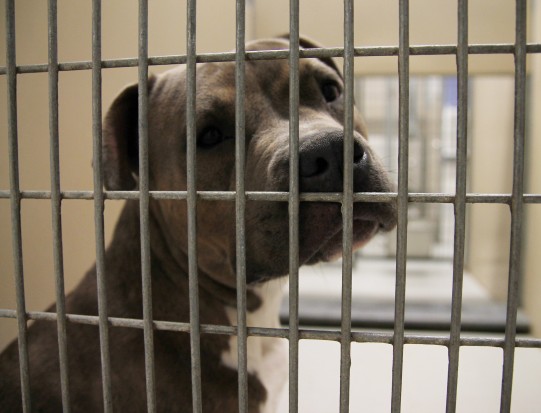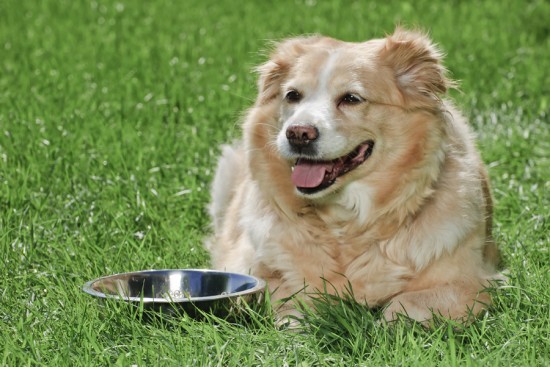Not too long ago, it was a given that the only way to properly train a dog was to, in effect, beat the dog into submission. It was thought that until the dog had been broken mentally, it would not be responsive to commands. Fortunately, this prehistoric thinking has been largely relegated to the past, but intelligent obedience training is still recommended for most dogs.
Anyone who owns a dog larger than they can comfortably pick up at need should provide obedience training. Smaller dogs can also benefit from training, but for dogs over 30 pounds it should be considered a necessity. Large dogs in the range of 50 or more pounds can cause serious problems - either to people or other pets.
Dogs have evolved from wild canines that live in a very structured society. Every wolf, coyote, or African hunting dog knows exactly where he or she stands in regard to the rest of the pack. This hierarchal structure keeps the group peaceful. As dogs have moved into human society, they have become part of a human pack, and must learn their place in each household.
Every living creature on earth has the desire to rise to the top, to become Number 1, and dogs are no exception. Without obedience training of some kind, most dogs will try to move to the alpha position in a home, taking over from the humans. The dog will protect the people, but it will also expect the humans to defer to it. This is a very undesirable situation that can lead to aggression not only to the immediate human pack, but to other humans as well. This is a potentially explosive situation when the dog involved is a large, strong breed such as German Shepherd.
The point of modern obedience training is not to produce a robot, but to help a dog understand its place in the home society, and to produce confidence. When obedience training is done with patience, positive reinforcement, understanding, and consistency, it will strengthen the bond between master and dog, and result in a dog that will be able to go more places and will probably remain in the home for its lifetime. Most dogs that wind up in shelters do so because their owners are unable to control them; these dogs often exhibit aggression.
A dog can receive obedience training either at home or in a class. Using a class for obedience training can be a good choice to provide socialization with other dogs and people. Shy dogs can often get over their shyness by participating in a group. Regularly scheduled sessions will help make sure that training continues, too.
The best time to start training is while the puppy is young, although obedience training an adult dog is relatively easy, too. The keywords to successful obedience training are positive reinforcement and patience. Hitting a puppy or dog when an incorrect response is given will result in a dog that develops fear of its owner. This dog is more likely to ignore commands in the future and may become neurotic.
When using positive reinforcement for obedience training, you will be rewarding good behavior with treats and praise and ignoring unwanted behavior. It does take longer for positive reinforcement training to take effect, but it is permanent, unlike training that has been conducted using fear and pain. Keep sessions short and if either you or the dog show signs of boredom or aggravation, stop immediately and do something else.
The dog's breed will have some bearing on how well obedience training goes. Certain breeds such as Border Collies and Labrador Retrievers are very easy to train, while other breeds, such as Pekingese and Dalmatian are more difficult. Difficult breeds to train are not necessarily unintelligent; in most cases they are simply stubborn.
Small dogs are often the most difficult to obedience train for several reasons: they are often very stubborn, and they consider themselves to be above such things. When our French Bulldogs were puppies, we tried to give them some basic obedience training simply as a safety measure. All three pups learned the basic come, sit, stay, almost immediately. Two or three repetitions were enough for them to master the commands. However, after they did master them, they all refused to do them anymore. If you told them to come, they would sit or lie down and a command to stay resulted in them tearing towards you.
Small dogs do have a different outlook than many larger breeds, and if you do decide you want to add one of these companions to your household, it would be best to accept that despite the dog's intelligence, it can be basically untrainable in some cases.

 One stop solution for all dog bed requirements
One stop solution for all dog bed requirements
One stop solution for all dog bed requirements
One stop solution for all dog bed requirements
 All About Dog Rescue Centres
All About Dog Res
All About Dog Rescue Centres
All About Dog Res
 A Glance At The Benefits Of Raw Pet Food
A Glance At The Benefits Of Raw Pet Food
Raw P
A Glance At The Benefits Of Raw Pet Food
A Glance At The Benefits Of Raw Pet Food
Raw P
 Scottish Terrier Hereditary Health And Longevity
Scottish Terrier
Scottish Terrier Hereditary Health And Longevity
Scottish Terrier
 Basic Dog Care
Basic Dog Care
Basic Dog Care
Basic Dog Care